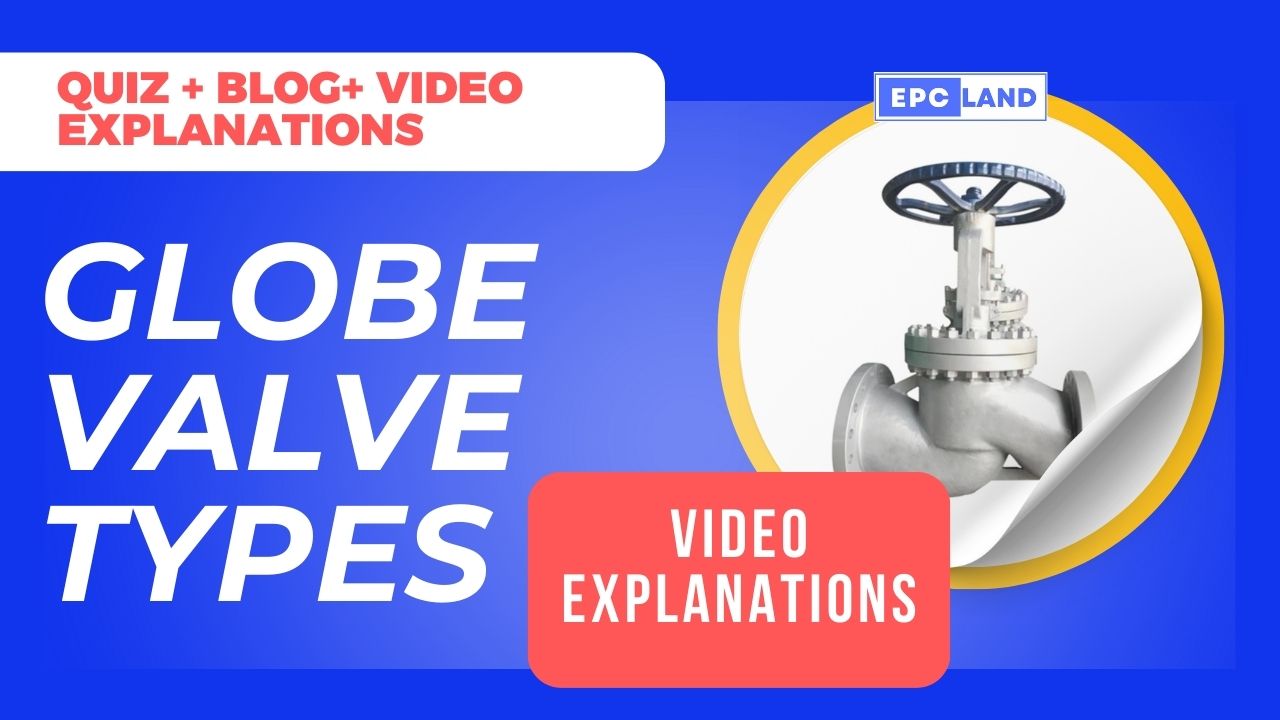Globe Valve Types: Master 10 Essential Questions
Understandingglobe valve types is crucial for anyone involved in piping systems and engineering. Globe valves are fundamental components used to regulate or stop the flow of fluid. Their design varies significantly depending on the specific application requirements, such as pressure, temperature, space constraints, and maintenance needs. These variations are primarily seen in the body design and how the bonnet connects to the body. Mastering the different globe valve types, including Z-type, Y-type, and angle type body designs, as well as screwed, bolted, welded, and pressure seal bonnet connections, is essential for proper valve selection and system performance.
Table of Contents
👉 Check Course on Piping Engineering
Test Your Knowledge: 10 Essential MCQs on Globe Valve Types
1. What is the primary function of a globe valve?
2. Based on body design, how many main types of globe valves are discussed?
3. Which body design of a globe valve typically causes a higher pressure drop in the fluid flow?
4. In which globe valve body design are the seat and stem placed at approximately a 45° angle to reduce pressure loss?
5. Which type of globe valve body design changes the direction of flow by 90° and can eliminate the need for an extra elbow?
6. An angle type globe valve is especially suitable for applications with:
7. What is the simplest and cheapest type of bonnet connection discussed for globe valves?
8. Which type of bonnet connection is the most commonly used design in industrial applications for globe valves?
9. Which bonnet connection type is permanently joined to the body and is preferred where maintenance or repair is not expected?
10. Which globe valve bonnet design utilizes the internal pressure to help create a tighter seal, making it suitable for high pressure and high temperature applications?
👉 Browse EPCLAND Courses
Major Takeaways on Globe Valve Types
- Globe valve types are primarily categorized by their body design (Z, Y, Angle) and bonnet connection (screwed, bolted, welded, pressure seal).
- The Z-type is the most common body design but causes a higher pressure drop due to the perpendicular flow path.
- Y-type globe valve types reduce pressure drop by positioning the seat and stem at a 45° angle to the pipe axis, making them suitable for high-pressure services.
- Angle-type globe valve types change flow direction by 90°, eliminating the need for an extra elbow and weld, and are effective for fluctuating flow conditions.
- Bolted bonnets are the most commonly used bonnet type, employing a gasket for sealing.
- Pressure seal bonnets are specifically designed for high pressure and high temperature applications, using internal pressure to enhance the seal.
Conclusion
Understanding the distinct characteristics, advantages, and limitations of different globe valve types—defined by their body shape and bonnet connection—is vital for effective piping system design and operation. Each type serves specific purposes and performs best under certain conditions, whether it’s minimizing pressure drop, handling high pressures, or managing complex flow paths. Choosing the right globe valve type ensures system efficiency, safety, and longevity, highlighting why a thorough understanding of these essential components is indispensable for any piping professional.
👉 Visit Quiz Blog Collection



